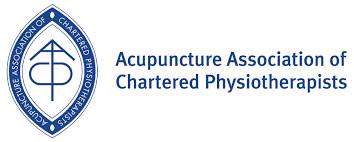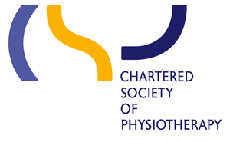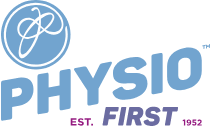Many of us are often stressed and sore, but very few actually do anything about it. Whether you’re experiencing muscle tension as a result of stress or physical pain due to an injury or medical condition, massage therapy can offer a number of benefits to us all. With a licensed massage therapist on your side, you don’t have to grin and bear it any longer.
If you’re interested in learning more about the benefits of massage therapy, keep reading. This blog from the expert team at Essex Physiotherapy Clinic outlines the main rewards you could reap from undergoing massage therapy.
Massage therapy is one of the oldest healing traditions, with evidence of having been used by the Ancient Greeks, as well as historic Egyptian, Chinese and Indian peoples.
It involves kneading or manipulating a person’s muscles and/or other soft tissues in order to improve their wellbeing or health. This can take the form of holding, moving or applying pressure to muscles, tendons, ligaments and fascia. Massage tools can also help aid relaxation and provide relief from whatever symptoms are troubling you.
With the goal of slowing down your nervous system in mind, massage therapy can be used for stress management, releasing tension, providing relief from symptoms, healing injuries and supporting overall wellness.
The term ‘massage therapy’ is often used as an umbrella term for a wide variety of techniques. These techniques vary in the manner in which touch, pressure, and the intensity of the treatment are applied.
Here are some of the most common types of massage therapy:
A Swedish massage is usually the go-to type of massage for those seeking relaxation. Typically, it is a full-body massage that uses a gentle touch to calm the nervous system and encourage a relaxed state of mind. This is a great option for those who are new to the world of massage therapy.
Your muscles can get tight for all sorts of reasons, whether you’re extremely active or not. Even something as seemingly harmless as driving or sitting at your desk can take its toll. Deep tissue massage focuses on getting deep into your muscles and tendons in order to release tension and tightness. This is a good choice for people with injuries, chronic muscle pain or general muscle tightness.
Sports massages are similar to deep tissue massages, but they primarily focus on the muscles that are most affected by sports or other repetitive physical activity. Athletes and dancers use their bodies differently from the average person. A massage therapist with knowledge of and experience in sports massage will know best how to treat these clients and target problem areas that are specific to their sport or other physical activity.
A knot or muscle spasm in the tissue is known as a trigger point. A trigger point massage, therefore, uses focused and direct pressure to target these tight spots. This increases blood flow to the area, helping them loosen or release. This type of massage can be helpful for people with chronic pain.
The fascia is a web of connective tissue under the skin that supports the muscles and allows us to move freely. Myofascial release involves kneading and stretching the muscles and the fascia surrounding them in order to work out tension and tightness. It is considered to be a form of deep stretching, rather than a traditional massage technique, and is usually used in conjunction with another type of massage therapy.
Lymphatic fluid has several important functions, including maintaining fluid levels and removing waste products from the body. Lymphatic massage uses a gentle touch to help lymphatic fluid flow more freely through the body. This makes it a great option for people with inflammatory conditions, such as those with arthritis or people who’ve had mastectomies.
Prenatal massages are great for helping expectant mothers relax and find some relief from the aches, pains, and fatigue that pregnancy brings. This type of massage focuses on areas that are prone to aches and pains during pregnancy, such as the hips, feet, and legs.
Most of us are aware of the relaxing nature of massage therapy, but what about all the other benefits it can offer? Here are some benefits of massage therapy that you might not be aware of.
If you have insomnia or have trouble sleeping, massage therapy might be a good option for you. Sleep is directly related to how much activity there is in the nervous system. Massage therapy actually slows down your nervous system due to the pressure being applied, which can then produce a calming, sleep inducing effect.
As an added bonus, deeper sleep can reduce your body’s levels of substance P (a neurotransmitter for pain) which reduces the experience of pain. Therefore, a massage can actually fight these two issues – poor sleep and pain – in one go.
Thanks to its sleep inducing properties, massage therapy can also help to reduce fatigue caused by either poor sleep or some biological factors. This is especially true if you get a massage treatment regularly, such as once a week. Feeling less fatigued will subsequently boost concentration and alertness, and could even elevate your mood.
Massage therapy can help improve focus in another way. In order for you to best pay attention, your heart rate needs to be steady and at a normal level. During a massage, your pressure receptors stimulate vagal activity, which stems from a nerve in your brain that leads to several different parts of the body – one of which is the heart. Massage therapy slows your nervous system and increases vagal activity, which can subsequently lower your heart rate and improve focus.
If you suffer from stress and/or anxiety, research has suggested that you might benefit from massage therapy. Your body has two different nervous systems: the sympathetic nervous system and the parasympathetic nervous system. The sympathetic nervous system is the one responsible for the innate “fight or flight” response, while the parasympathetic nervous system oversees the quiet “rest and digest” conditions.
People with generalised anxiety disorder often show a greater sympathetic response than the average person. During a massage, the parasympathetic response – that is, the response of the calmer “rest and digest” nervous system – is increased, which can then result in a decrease in anxiety symptoms.
It is also possible that the reduction in anxiety symptoms as a result of massage therapy could be long-lasting. A study has shown that some participants actually remained anxiety-free (or certainly experienced less severe symptoms) for anywhere between 6 and 18 months after undergoing massage therapy.
Whether they’re due to an uncomfortable desk chair or having run a marathon, general aches and pains can be extremely uncomfortable and possibly even debilitating. Alongside acupuncture and physiotherapy, massage therapy is one of the best treatments available for those experiencing neck pain, lower back pain, or any other kind of musculoskeletal pain or discomfort.
Many studies have looked into how massage therapy can help reduce back pain, neck pain, some types of headaches and knee pain. The results suggest that relief may only be short-term, but in many cases this might be sufficient. They also found that receiving a 60-minute massage multiple times per week provided better pain relief than fewer or shorter sessions.
In addition to soothing sore muscles and releasing painful knots or spasms, massage therapy can reduce physical pain in people who struggle with chronic pain or any medical condition which causes its sufferers pain.
Some studies have found that massage could potentially help with:
● Anxiety
● Digestive disorders
● Fibromyalgia
● Headaches
● Cancer-related pain
● Insomnia
● Lower back pain
● Myofascial pain syndrome
● Nerve pain
● Soft tissue strains or injuries
● Temporomandibular joint pain
● Upper back and neck pain
Despite its many benefits, massage therapy is not intended as a replacement for regular medical care. Be sure to follow the usual procedures for any medical concerns, be it contacting your GP or visiting your local hospital. It is also a good idea to let your doctor know you’re thinking of trying massage therapy before beginning treatment.
If you regularly feel under the weather, you may benefit from massage therapy. Research suggests that massage therapy can increase the number of lymphocytes in your blood. Lymphocytes are a type of white blood cell that defends your body from disease, so an increase in these can result in an improved immune system.
By manipulating the soft tissues throughout your body, massage therapy can improve your joints’ range of motion and your overall flexibility. Sports massage, in particular, is known for its impact on movement and flexibility, but any kind of massage therapy can be beneficial on this front. Researchers believe this occurs because massage therapy encourages blood flow to the joints, promotes circulation of lymphatic fluid, releases any tendon tightness, and relaxes the muscles.
If you’re interested in discovering the benefits of massage therapy yourself, look no further than Essex Physiotherapy Clinic. Whether you want a massage treatment for stress management purposes or to help you recover from an injury, our comprehensive range of tailored massage therapy treatments are sure to help. Offering everything from massage therapy to acupuncture, we’ll go the extra mile to find the solution that works best for you. Contact us today to learn more about how we can help you.




